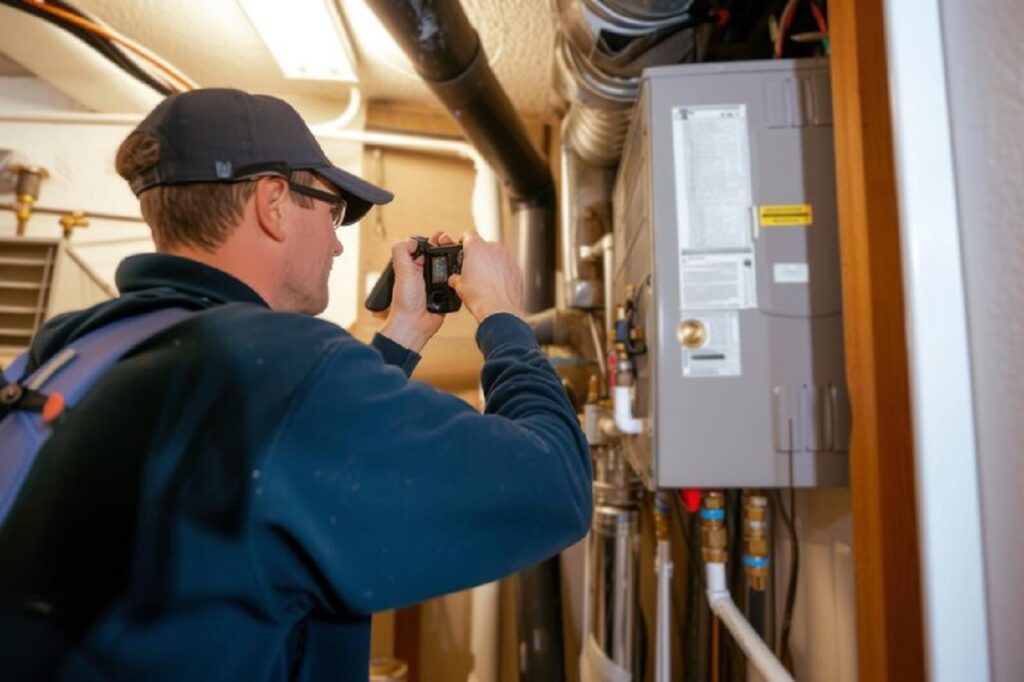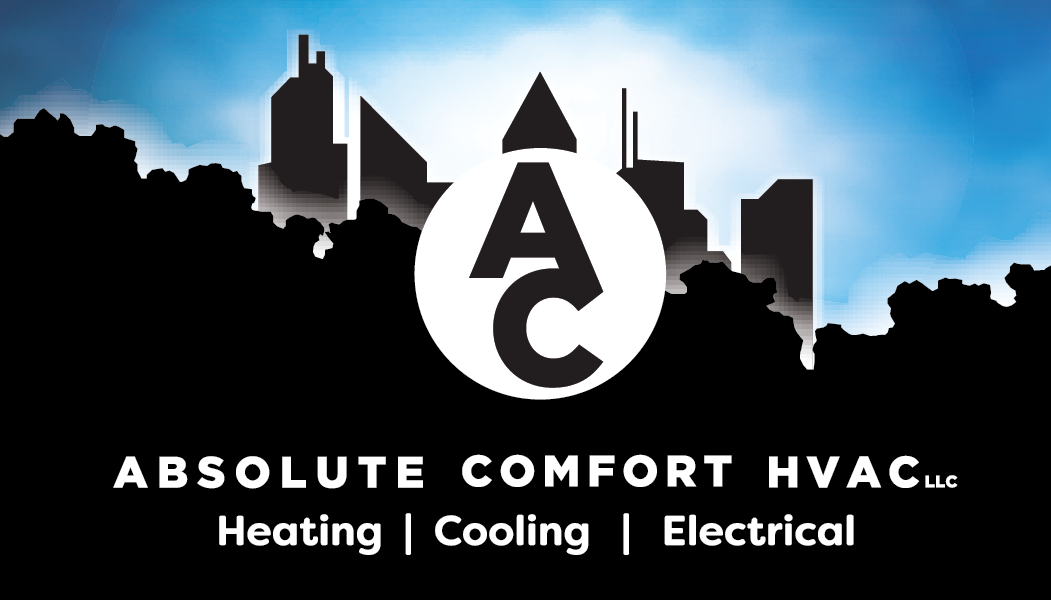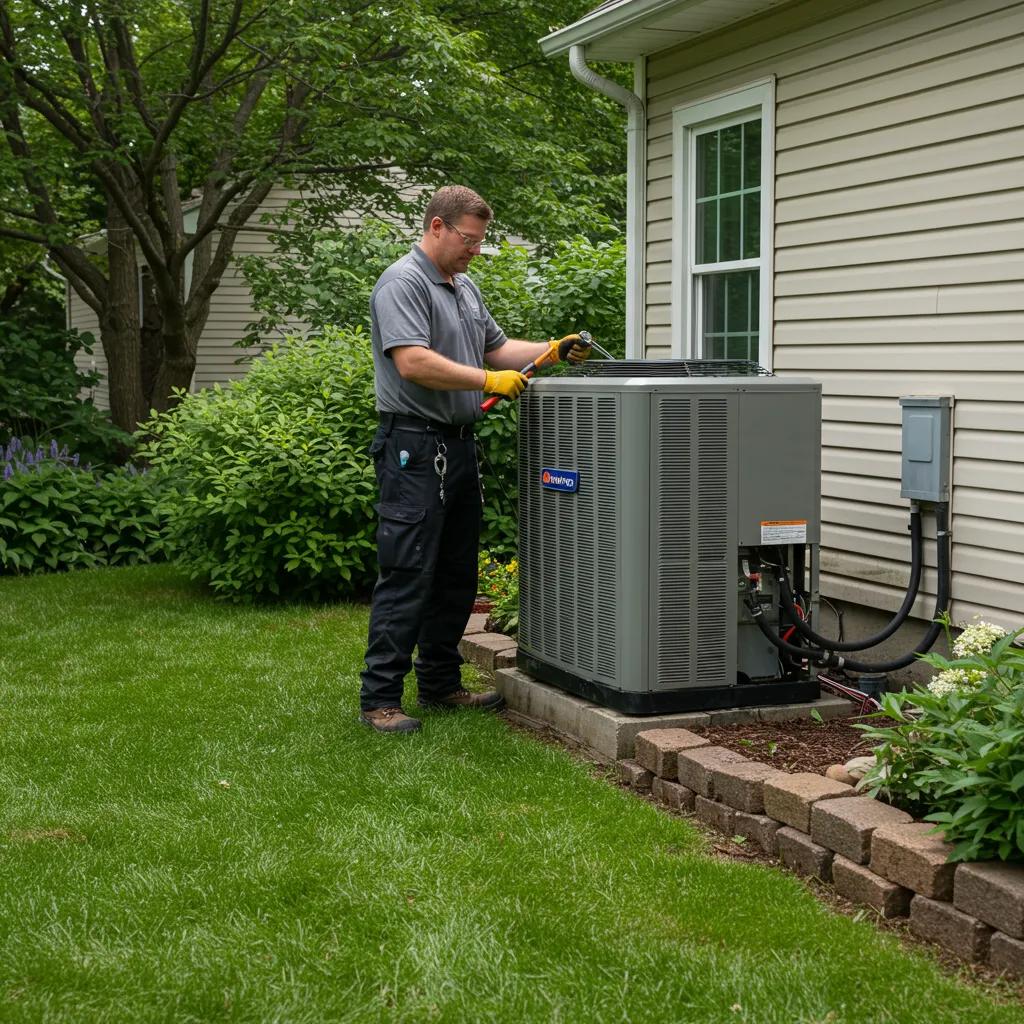Get Your HVAC Ready for the Season: Your Essential Maintenance & Tune-Up Guide for Wisconsin Homes and Businesses
A sudden breakdown in the middle of summer or a heating failure during the coldest part of winter can cost Wisconsin property owners a fortune in repairs and lost comfort. This guide provides a detailed HVAC checklist to keep your system running smoothly, efficiently, and safely, from spring all the way through winter. You’ll learn why seasonal HVAC maintenance is a must in Wisconsin’s climate, what a professional tune-up involves, step-by-step checklists for getting your air conditioner ready for spring and your furnace prepped for winter, smart energy-saving strategies, and how to decide between tackling some checks yourself or calling in the experts. Each section builds on the last, guiding you through the challenges of our climate, the essentials of a tune-up, seasonal to-dos, efficiency boosters, service options, and what’s new in HVAC. By following these recommendations—backed by the local know-how of Absolute Comfort—you can extend your system’s life, improve your indoor air quality, and trim your utility bills. Let’s start by understanding why being proactive with your HVAC is so important for every home and business in Wisconsin.
Why Is Seasonal HVAC Maintenance So Crucial for Wisconsin Properties?
Keeping up with seasonal HVAC maintenance is key to ensuring your system runs reliably and saves you money on energy, especially with Wisconsin’s extreme temperature swings. Regular tune-ups catch wear and tear early, prevent unexpected breakdowns, and keep your home or business comfortable all year long. Proper care also helps meet local standards and protects everyone’s health by maintaining good indoor air quality. As you get your system ready for each season, you’re building a solid foundation for efficient cooling in the spring and reliable heating in the winter, cutting down on downtime and avoiding those costly emergency repair calls.
How Does Wisconsin’s Climate Affect Your HVAC’s Performance and Lifespan?
Wisconsin’s climate, with its hot, humid summers and frigid, snowy winters, really puts HVAC systems through their paces, exposing them to drastic temperature changes and high humidity. These conditions put a strain on components like compressors and coils, leading to faster wear and reduced efficiency. For instance, high summer humidity makes your air conditioner work harder to remove moisture, while ice and snow buildup in winter can block your outdoor unit. Understanding these local challenges helps you prioritize maintenance tasks and extend your equipment’s life by addressing wear specific to our region.
What Are the Main Advantages of Regular HVAC Seasonal Maintenance?
Regular seasonal maintenance leads to significant energy savings, better indoor air quality, and a longer lifespan for your system by catching small issues before they become big problems. Keeping coils and filters clean helps lower energy use, and having your system calibrated ensures accurate temperature control. Regular inspections also remove allergens and pollutants that can affect respiratory health. Best of all, preventative care drastically reduces the chances of a breakdown, meaning fewer emergency service calls and lower overall costs throughout the system’s life.
How Often Should You Schedule HVAC Tune-Ups in Wisconsin?
To ensure your HVAC system is performing at its best when you need it most, schedule tune-ups twice a year: once in the spring to get your cooling system ready, and again in the fall to prepare your heating system. A spring inspection ensures your air conditioner can handle the higher demands of summer, while an autumn service gets your furnace or heat pump ready for the sub-zero temperatures. This twice-a-year routine aligns perfectly with the seasonal transitions, minimizing stress on your equipment and keeping it running efficiently.
What’s Included in a Comprehensive HVAC System Tune-Up?
A thorough HVAC tune-up involves a detailed inspection, cleaning, calibration, and safety checks designed to bring your system back to its peak performance. Our technicians will examine all major components, replace any worn parts, verify refrigerant levels, and test system controls. This comprehensive service boosts reliability, improves efficiency, and addresses potential safety hazards like carbon monoxide leaks. By tackling mechanical, electrical, and airflow issues all at once, we help property owners maximize their system’s lifespan and comfort.
Which HVAC Components Are Checked During Seasonal Maintenance?
Our technicians meticulously inspect air filters, blower motors, evaporator and condenser coils, electrical connections, and refrigerant pressure. We also examine ductwork for leaks, check thermostat accuracy, and clear out any clogs in drain lines. Crucial safety features like limit switches and emergency shutoffs are tested to ensure they function correctly. This detailed checklist helps us spot hidden problems early and prevent minor issues from turning into major failures.
Residential Air Conditioning Technician Training Manual
ABSTRACT: This manual provides job-relevant tasks, performance objectives, performance guides, resources, learning activities, evaluation standards, and achievement testing for the occupation of environmental control system installer/servicer (residential air conditioning technician). It is designed for use with any chosen teaching method. The course outline is divided into six duties: (1) brazing, cutting, fitting, soldering, and welding piping and tubing; (2) installing and servicing controls; (3) installing and servicing electrical circuits, components, and motors; (4) installing and servicing compressors, condensers, evaporators, and cooling towers; (5) installing and servicing refrigeration systems and domestic refrigerators; and (6) installing and servicing residential air conditioning and heating systems. A total of 154 performance objectives are categorised under these duties. The performance objective is defined in terms of task, conditions, standard, and source for standard. These compo
Environmental Control System Installer/Servicer (Residential Air Conditioning Mechanic). V-TECS Guide., 1985
How Do Professional Tune-Ups Enhance HVAC Safety and Efficiency?
Professional tune-ups combine thorough cleaning, component testing, and system calibration to improve heat transfer and airflow, which can reduce energy consumption by up to 20 percent. Our safety checks, including carbon monoxide detection and electrical insulation tests, help prevent fire and poisoning risks. Properly calibrated controls maintain consistent temperatures, avoiding the energy waste associated with systems that cycle too often or unevenly. The result is a safer, more efficient HVAC system that costs less to operate.
What’s the Difference Between AC and Furnace Tune-Ups?
When we tune up your air conditioner, we focus on the refrigerant charge, coil cleanliness, and compressor health. For your furnace, the service centers on checking the heat exchanger’s integrity, inspecting the burners, and ensuring the flue exhaust is safe. AC tune-ups include cleaning the outdoor unit’s fins and clearing condensate drains, while furnace checks involve inspecting ignition systems, gas valves, and pilot assemblies. Both services include replacing filters and calibrating the thermostat, but the specific safety checks differ based on the system.
How to Get Your Air Conditioner Ready for Spring: A Detailed Checklist
Getting your AC ready for spring means restoring its optimal cooling performance after a long winter’s rest. This checklist guides both homeowners and our technicians through the essential tasks that improve airflow, prevent refrigerant leaks, and boost dehumidification. Following these steps helps lower your energy bills, avoids unexpected mid-season breakdowns, and ensures your home stays cool and comfortable as temperatures climb.
- Clean the condenser coils and straighten any bent fins to maximize heat transfer.
- Inspect refrigerant lines and check the pressure to ensure a proper charge.
- Replace or clean your air filters to maintain efficient airflow.
- Test your thermostat’s responsiveness and program it for peak efficiency.
- Clear out condensate drain lines to prevent water damage.
These actions will restore your AC’s cooling power, prevent moisture buildup, and prepare it for consistent operation throughout the summer.
What Are the Key Steps for Spring AC Maintenance?
Spring maintenance starts with a visual inspection of your outdoor unit to clear away any debris and check the coil condition. Cleaning both the evaporator and condenser coils removes dirt that can hinder heat transfer. Replacing your filters prevents airflow restrictions, while checking refrigerant levels and testing for leaks ensures cooling efficiency. Finally, calibrating the thermostat and testing the fan operation guarantees reliable temperature control.
How Should You Program Your Thermostat for Summer Efficiency?
To make your thermostat work efficiently for summer, set it to a higher temperature when your home is empty or during the night. Using a programmable or smart thermostat, raise the cooling setpoint by 2–4 degrees Fahrenheit when you’re at work or sleeping to reduce how often the system runs. Enabling features like adaptive recovery ensures your home reaches your desired temperature at the scheduled time without wasting energy. These smart tactics help lower your utility bills while keeping you comfortable.
When Should You Call a Professional for AC Spring Preparation?
You should call a qualified technician if you notice any refrigerant leaks, hear unusual noises, experience poor cooling performance, or see persistent moisture around your AC unit. Professional help is also necessary for handling refrigerants, diagnosing electrical issues, and servicing the compressor. Any sign of low pressure, ice formation, or electrical faults warrants an expert assessment to prevent costly damage.
How to Get Your Furnace Ready for Wisconsin Winters: A Step-by-Step Guide

This step-by-step guide will help you ensure your furnace is ready to provide safe, efficient heating throughout Wisconsin’s harsh winters. Comprehensive preparation includes inspecting heat exchangers, testing ignition systems, and verifying airflow. Completing these tasks before the cold weather hits will help you avoid emergency breakdowns and keep your home warm and comfortable when you need it most.
- Inspect the heat exchanger for any cracks or signs of corrosion.
- Clean or replace your furnace air filter to ensure balanced airflow.
- Test the ignition and burner flames to confirm proper combustion.
- Check your carbon monoxide detectors and their battery status.
- Lubricate the blower motor and inspect its belts.
Following this sequence helps reduce fire risks, prevents carbon monoxide exposure, and ensures consistent heat delivery all winter long.
What Furnace Components Need Inspection Before Winter?
Heat exchangers, burners, ignition systems, and flue assemblies require careful examination to prevent leaks and ensure complete combustion. Air filters, blower motors, and belts need cleaning and lubrication to maintain proper airflow. We also inspect electrical wiring and safety switches to confirm reliable operation under heavy use.
Why Is Proper Carbon Monoxide Detector Placement Crucial in Winter?
Carbon monoxide detectors should be placed near sleeping areas and on every level of your home to alert occupants to dangerous leaks. Placing them correctly—about 1–3 meters from the floor—ensures early detection of this odorless, colorless gas. Testing your detectors monthly and replacing batteries keeps these life-saving devices ready, especially during extended furnace operation.
How Can Regular Furnace Maintenance Prevent Costly Repairs?
Preventative maintenance allows us to catch component wear, like cracked heat exchangers or worn belts, before they cause heating failures or system shutdowns. Addressing minor airflow issues and ignition irregularities reduces strain on the blower motor and heat exchangers, extending their service life. Consistent upkeep also helps you avoid expensive emergency calls and last-minute replacement costs.
Energy-Saving Tips for Your HVAC System in Wisconsin
Implementing energy-saving HVAC strategies can help Wisconsin property owners manage rising utility costs while reducing their environmental footprint. Simple maintenance tasks, combined with smart technology upgrades, can lead to significant reductions in energy consumption and operational expenses. Following these recommendations not only extends your equipment’s lifespan but also delivers lasting savings.
| Efficiency Measure | Impact on Consumption | Implementation Tips |
|---|---|---|
| Regular Filter Replacement | Reduces fan energy by 10–15 % | Replace every 1–3 months, depending on use |
| Smart Thermostat Installation | Lowers cooling/heating costs by up to 10 % | Program schedules based on when your home is occupied |
| Sealing Ductwork | Improves airflow efficiency by up to 20 % | Seal leaks with mastic sealant and metal tape |
| Coil Cleaning and Inspection | Enhances heat transfer by up to 15 % | Schedule before the peak cooling and heating seasons |
How Does Proper Maintenance Reduce Energy Consumption?
Keeping coils, filters, and ductwork clean minimizes resistance to airflow, which means your blower motor runs less and uses less energy. Calibrated thermostats prevent the system from over-cycling, and ensuring the correct refrigerant levels optimizes compressor performance. Together, these tasks can cut your annual HVAC energy use by up to 20 percent, leading directly to lower utility bills.
What Role Do Smart Thermostats Play in Seasonal HVAC Efficiency?
Smart thermostats learn your household’s schedule and automatically adjust temperatures, raising the setpoint during unoccupied periods to save energy. Features like remote control and geofencing allow for real-time adjustments, while adaptive recovery ensures your home is comfortable when you need it to be. The data analytics they provide offer valuable insights into your energy usage, helping you find even more ways to improve efficiency.
How Can Sealing Ductwork Improve HVAC Performance?
Sealing leaks in your duct joints and registers prevents conditioned air from escaping into unconditioned spaces like attics or crawl spaces. This leads to better airflow balance, reduces the energy your fan needs to use, and helps maintain consistent temperatures throughout your home. Properly sealed ducts also put less strain on your HVAC equipment, extending its life and improving indoor air quality by preventing dust and other contaminants from entering your system.
Should You Choose DIY or Professional HVAC Seasonal Maintenance?
Deciding whether to handle HVAC maintenance yourself or hire a professional depends on the complexity of your system, potential safety risks, and local regulations. Simple tasks like changing filters and programming your thermostat can often be done at home. However, tasks involving refrigerant, in-depth safety checks, and electrical diagnostics require certified technicians. Understanding these distinctions helps property owners balance cost savings with the need for system reliability and safety.
What Are the Benefits and Limitations of DIY HVAC Checks?
DIY checks can save you money upfront and empower you to keep your system running smoothly on a basic level. Tasks like replacing filters, clearing debris around your outdoor unit, and checking thermostat settings are generally straightforward. However, DIY efforts can’t address refrigerant leaks, electrical hazards, or detailed safety evaluations, and attempting them incorrectly could void your warranty or even damage your system.
When Is Professional HVAC Service Essential?
Professional service is crucial for tasks like refrigerant recharging, compressor servicing, heat exchanger inspections, and safety control tests. Certified technicians have the specialized tools and expertise needed to diagnose electrical faults, calibrate complex controls, and perform carbon monoxide assessments. Hiring experts helps you avoid liability issues and ensures your system meets all local licensing and safety standards.
How Does Absolute Comfort Ensure Reliable Seasonal HVAC Service?
Absolute Comfort combines the expertise of our certified technicians with maintenance protocols specifically designed for Wisconsin’s climate. Our systematic approach includes multi-point inspections, performance testing, and detailed reports for our customers. Our comprehensive tune-up packages prioritize safety checks, energy efficiency, and component longevity, ensuring your system runs seamlessly and giving you peace of mind.
What Are the Latest HVAC Trends and Regulations Affecting Seasonal Maintenance in Wisconsin?
New trends and updated regulations are changing how HVAC systems are serviced in Wisconsin. The phase-out of certain refrigerants, the increasing popularity of heat pumps, and the integration of smart technology are all influencing maintenance practices and costs. Staying informed about these changes helps property owners plan for upgrades, ensure compliance, and keep their systems performing optimally.
How Will New Refrigerant Regulations Affect Your HVAC Service Costs?
The move away from R-410A refrigerant towards alternatives with lower global warming potential (GWP) will likely increase supply costs and may require retrofits for older equipment. Service providers will also incur costs for training and certification to handle these new refrigerants, which could be passed on to customers. Upgrading to compliant refrigerants can improve efficiency and future-proof your system against upcoming mandates.
What Are the Advantages of Heat Pump Systems for Wisconsin Homes?
Heat pumps provide both heating and cooling from a single unit, offering enhanced energy efficiency, especially the cold-climate models designed to work effectively even in sub-zero temperatures. They also reduce carbon emissions and may qualify for state and federal rebates. Seasonal maintenance for heat pumps includes checking the reversing valve and defrost cycle to ensure optimal performance year-round.
How Is Smart HVAC Technology Changing Seasonal Maintenance?
Smart HVAC technology, with its IoT-enabled sensors and predictive analytics, can detect component wear and refrigerant issues before they lead to a breakdown, enabling maintenance based on the system’s actual condition. Remote diagnostics allow technicians to identify problems in real time, reducing the need for unnecessary service calls and speeding up repairs. Integrating with building automation systems provides a comprehensive view of performance, streamlining seasonal preparations and optimizing energy use.
Frequently Asked Questions About Preparing Your HVAC for the Season
Getting your HVAC system ready for the changing seasons involves understanding key maintenance principles, ideal service schedules, and essential safety measures. The main points include biannual inspections, servicing coils and filters, checking refrigerant, calibrating thermostats, and ensuring carbon monoxide safety. Combining these tasks with energy-saving upgrades and professional tune-ups creates a complete preparation strategy.
| Preparation Factor | Best Practice | Outcome |
|---|---|---|
| Service Frequency | Twice annually | Consistent peak performance |
| Core Maintenance Tasks | Filter, coil, and refrigerant inspection | Enhanced airflow and efficiency |
| Safety Measures | Heat exchanger, gas valve, and detector tests | Reduced fire and CO risks |
| Professional vs DIY | Licensed technician for complex tasks | Reliable service and compliance |
By incorporating these factors into your annual HVAC checklist, Wisconsin homeowners and commercial property managers can ensure optimal comfort, safety, and cost savings throughout the year.
Systematic seasonal preparation builds on solid maintenance principles, takes advantage of modern technology, and stays in line with evolving regulations. Consistently caring for your HVAC system means lower bills, fewer unexpected breakdowns, and lasting indoor comfort.
A proactive approach to HVAC upkeep in Wisconsin not only protects your equipment and the people inside but also boosts energy efficiency and supports environmental responsibility. Partnering with a trusted local provider like Absolute Comfort ensures reliability, while applying these guidelines empowers you to keep your system running at its best, every season.


